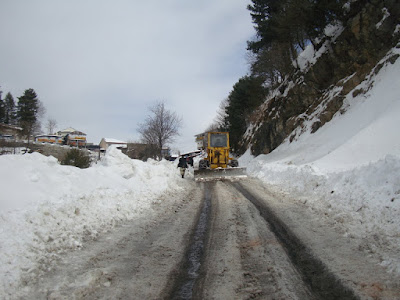Murree is a mountain resort town, located in the Galyat region of the Pir Panjal Range, within the Rawalpindi District of Punjab, Pakistan. It forms the outskirts of the Islamabad-Rawalpindi metropolitan area, and is about 30 km (19 mi) northeast of Islamabad. It has average altitude of 2,291 metres (7,516 ft). Construction of the town was started in 1851 on the hill of Murree as a sanatorium for British troops. The permanent town of Murree was constructed in 1853 and the church was consecrated shortly thereafter. One main road was established, commonly referred to even in modern times, as the mall. Murree was the summer headquarters of the colonial Punjab Government until 1876 when it was moved to Shimla.
Murree became a popular tourist station for British within the British India, several prominent Englishmen were born here including Bruce Bairnsfather, Francis Younghusband and Reginald Dyer. During colonial era access to commercial establishments was restricted for non-Europeans including the Lawrence College. In 1901, the population of the town was officially 1,844, although if summer visitors had been included this could have been as high as 10,000.
Since the Independence of Pakistan in 1947, Murree has retained its position as a popular hill station, noted for its pleasant summer. Many tourists visit the town from the Islamabad-Rawalpindi area. The town also serves as a transit point for tourist's visiting Azad Kashmir and Abbottabad. The town is noted for its Tudorbethan and neo-gothic architecture. The Government of Pakistan owns a summer retreat in Murree, where foreign dignitaries including heads of state often visit. The town is considered by some of its locals and by adherents of the Ahmadiyya movement to be the final resting place of Mary, mother of Jesus.
Murree features a subtropical highland climate (Cwb) under the Köppen climate classification. It is situated in the outer Himalayas, retaining high altitude. This type of area has cold, snowy winters, relatively cool summers with drastically escalated rain, in relation with lower altitudes, and frequent fog. Precipitation is received year round, with two maxima, first one during winter and second one at summer, July–August. Total mean precipitation annually is 1,898 mm (74.7 in). Murree receives around 62.6 inches of snow per year according to a 13-year data.
A variety of rare animal species can be found in Murree, including the leopard, which inhabits the neighboring Galiyat region. Common animals include the rhesus monkey, wild boar, foxes and various species of birds, including the cheer pheasant and kalij pheasant. Murree gives its name to the Murree vole, a rodent species endemic to Pakistan. Murree's climate is unpredictable. It can change any time.



















0 Comments